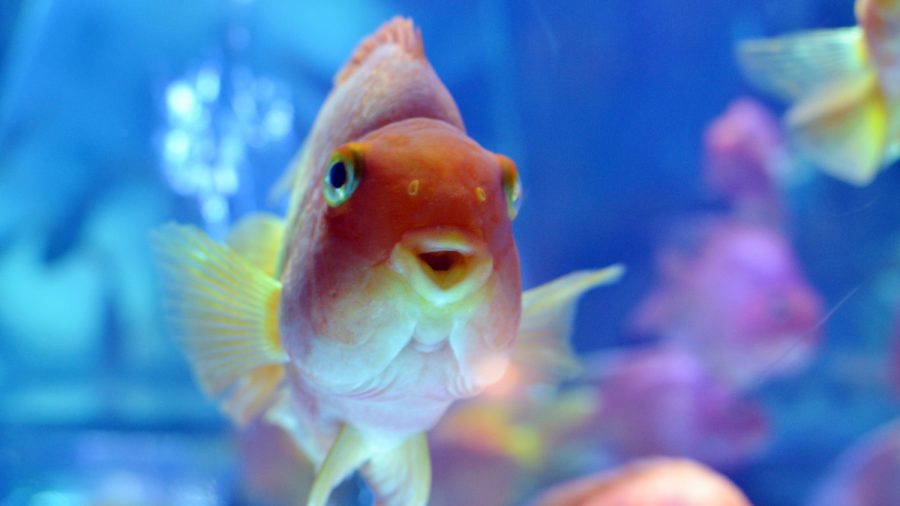A nonprofit group has issued a warning not to flush goldfish down the toilet after an employee caught a massive goldfish in the Niagara River.
Buffalo Niagara Waterkeeper shared a photo of the large goldfish on their Facebook page, reminding people, “This is why you should never flush your fish! This 14-inch goldfish was caught in the Niagara River, just downstream of the wastewater treatment plant.”
The group added, “Goldfish can survive year-round in our watershed and can destroy the habitat of native fish. Scientists estimate that tens of millions of Goldfish now live in the Great Lakes. If you cannot keep your pet, please return it to the store instead of flushing or releasing it.”
“We want to remind people that anything they flush down the toilet may end up in the water because of our sewer overflow problem in Buffalo,” the director of Community Engagement at the nonprofit, Chris Murawski, told WKBW.
Since goldfish aren’t native to North America, they have the potential to cause damage to local ecosystems.
“They just don’t have a natural predator here, so, they can out-compete some of our other native fish for food and space and resources here in the Great Lakes,” Murawski said.
He added that following a storm, things such as bacteria, waste, and pet fish can end up in the waters of Western New York, “harming the health of the natural ecosystems and posing a health risk to humans.”

Goldfish aren’t easy to take care of. An employee at Elmwood Pet Supplies, Josh Schwartz, recommended that people return the fish to pet stores rather than dumping it down the drain if they can’t care for it.
“Goldfish are actually pretty demanding pets because they produce a lot of waste. They require a large space. It’s good to do your homework before jumping into the pond with the fish,” Schwartz told WKBW.
He added that if the pet goldfish becomes too much to handle, it’s best to contact a pet store.
“The store will likely offer a trade or accept the fish as a donation,” he said.
While goldfish sometimes struggle to survive in fish tanks, they seem to thrive in nature.

Through the years there have been multiple reports of massive goldfish spotted in lakes and rivers.
In 2015, aquatic invasive species specialist with Alberta Environment and Parks, Kate Wilson, told CNN that people throwing out pet fish has resulted in “freakishly large fish.”
“That’s the crazy thing about domestic aquatic pets, you have them in your aquarium and they are this cute little thing and then you release it into the wild and that constraint of size and food is gone and because of that some of these species can get really big,” Wilson said.
She added that the biggest one they’ve captured in Canadian waters was “the size of a dinner plate.”
She also warned people not to throw fish into the rivers.
“We are estimating hundreds of thousands are in flowing rivers and water. My biggest concern is people are doing this because they think it’s the humanitarian thing to do. We really need to correct misinformation.”
Crazy story from @CNNAmanda
Dumped goldfish turn into giants in Canadian watershttp://t.co/BbSSpFI4BW pic.twitter.com/BE3zVgqvh4
— CNN West / Midwest (@CNNBig22) June 25, 2015
“Goldfish are one of the world’s worst invasive aquatic species, with outbreaks also having been reported in Nevada, Colorado and Alberta, Canada, in the last several years,” according to 2016 New York Times article.
According to the report, the fish in the Vasse River of Western Australia “have the fastest known growth rate of goldfish in the world,” said Dr. Stephen Beatty, a researcher at Murdoch University.
He added, “Once you introduce something into a new environment—even if it’s a cute, cuddly aquarium fish—it can have quite unexpected, serious biological consequences.”
The goldfish is a type of domesticated carp and was first bred in ancient China.
In the Wild, Goldfish Turn From Pet to Pest https://t.co/Kmf8MNzsnq via @nytimes #InvasiveSpecies pic.twitter.com/RQgUBJqC2n
— Shedd Great Lakes (@Shedd_GL) September 27, 2016
“For centuries, goldfish were prized symbols of luck and fortune. Shortly after they made their way to the United States in the mid-1800s, however, they transitioned from the exotic to the mundane,” the report detailed.
“The United States government played a large role in this, according to Katrina Gulliver, a historian who has chronicled the goldfish. For decades in the late 1800s, the newly established Commission on Fisheries gave goldfish to Washington, D.C., residents as a publicity stunt, handing out as many as 20,000 fish in some years.”
Epoch Times reporter Jack Phillips contributed to this report.


